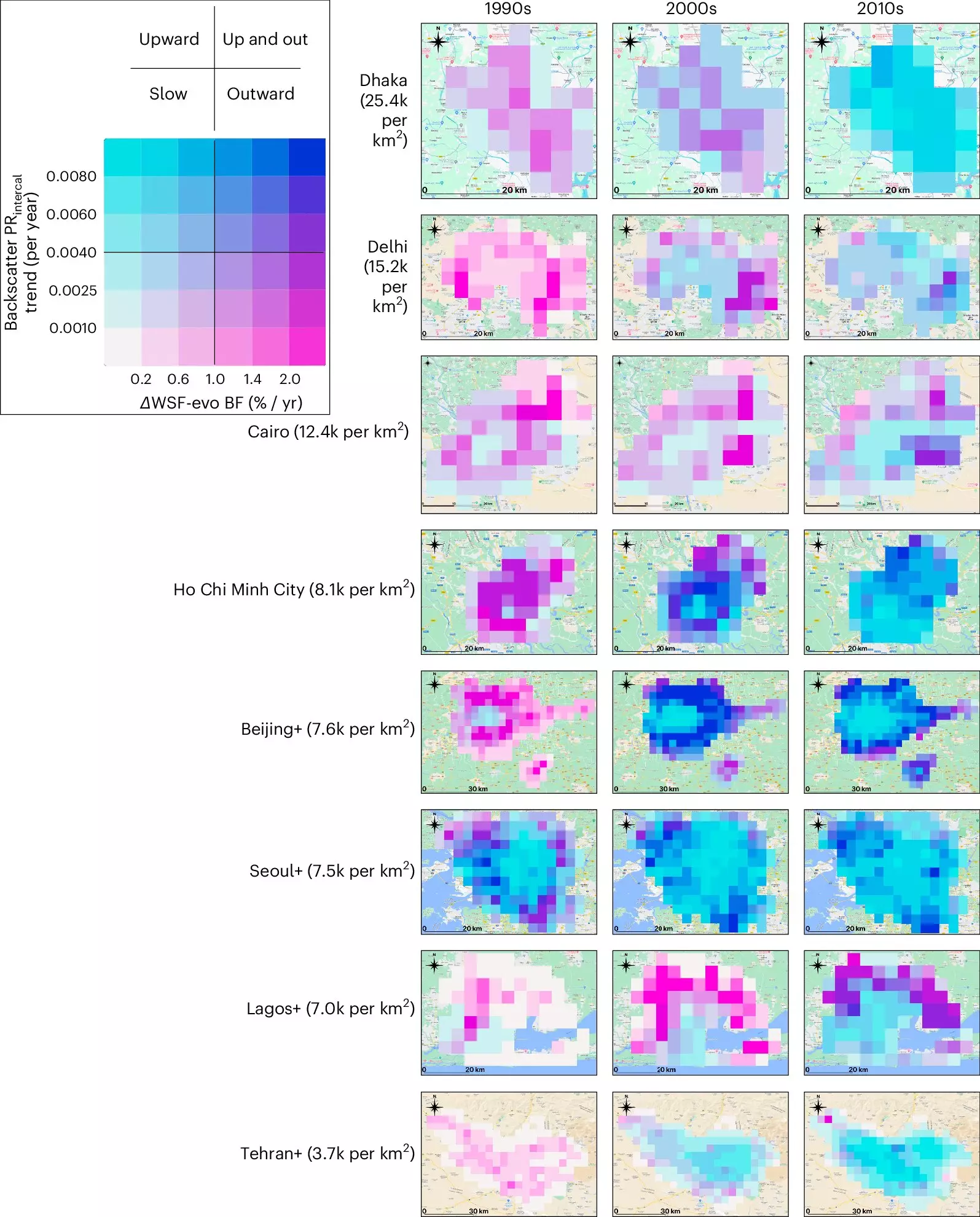Urbanization is a phenomenon that has been on the rise for the past several decades, with more and more people shifting from rural areas to cities. This trend has sparked interest among researchers, city planners, and environmental engineers to study how cities are evolving. A recent study published in the journal Nature Cities sheds light on the changing landscape of urban growth around the world.
The research team, consisting of Earth scientists, environmental engineers, and geomaticists, analyzed two types of satellite data for over 1,500 cities globally. The first type of data provided a two-dimensional view of a city’s footprint, while the second type, based on microwaves, allowed for the measurement of city growth in three dimensions. This comprehensive approach helped the researchers understand how cities have been expanding over the past few decades.
Contrary to the traditional notion of cities growing outward by expanding their boundaries, the study revealed a shift towards upward growth. Modern cities have been focusing on building taller structures, such as skyscrapers, rather than spreading horizontally. This trend towards vertical growth is aligned with economic development and has been observed in a majority of the cities included in the study.
While most cities exhibited a transition from outward growth to upward growth, the researchers noted some exceptions. Cities in Africa, China, and Southeast Asia continued to experience more outward growth compared to upward growth. These regional variations highlight the diverse nature of urban development trends and the need for tailored strategies by urban planners.
The findings of this study have significant implications for urban planning and resource allocation. By understanding the patterns of urban growth, city planners can make informed decisions about infrastructure development, housing policies, and environmental sustainability measures. This research provides valuable insights for preparing cities to accommodate the projected increase in urban populations by 2030.
The study on urban growth using satellite data offers a unique perspective on how cities around the world are evolving. The shift towards upward growth emphasizes the need for innovative approaches to urban planning and development. By leveraging the insights from this research, city planners can create more resilient and sustainable cities for the future.


Leave a Reply